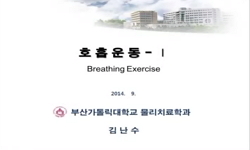Changdan is usually translated in `rhythmic cycle`. But it doesn`t merely have rhythmic determinants. It indicates also non-rhythmic aspects included with tempos, meter and moods, which are understood as separated from the rhythm itself in western mus...
http://chineseinput.net/에서 pinyin(병음)방식으로 중국어를 변환할 수 있습니다.
변환된 중국어를 복사하여 사용하시면 됩니다.
- 中文 을 입력하시려면 zhongwen을 입력하시고 space를누르시면됩니다.
- 北京 을 입력하시려면 beijing을 입력하시고 space를 누르시면 됩니다.
https://www.riss.kr/link?id=A40132438
- 저자
- 발행기관
- 학술지명
- 권호사항
-
발행연도
2004
-
작성언어
-
- 주제어
-
KDC
600
-
등재정보
KCI등재
-
자료형태
학술저널
-
수록면
11-41(31쪽)
- 제공처
-
0
상세조회 -
0
다운로드
부가정보
다국어 초록 (Multilingual Abstract)
Changdan is usually translated in `rhythmic cycle`. But it doesn`t merely have rhythmic determinants. It indicates also non-rhythmic aspects included with tempos, meter and moods, which are understood as separated from the rhythm itself in western music. In this respect, we should not bring the rhythmic definitions and methods for rhythmic analysis from western music theory to understand changdan. We need a new approach to it. Chαngdαn should be understood as variously patterned dynamic processions in musical time. Hereby, the patterns are not only rhythmic, but also mean continuously-connected-masses-of-energy by the unit of korean beat(pak). It organizes fundamentally all of the musical elements, rhythm, melody, tempo, moods and forms. The rhythmic pattern of one changdan itself, which is written in the book of introduction, tells us almost nothing. The important thing is, how differently one changdan can be played in practice and how it creates other musical processes in its various forms. But many scholars have focused only on these fixed and formed rhythmic patterns. We can, of course, take out just a rhythmic aspect from changdan and analyze it. But such an analysis makes a skeleton out of a flourishing organism. Western history is regarded as rationalization process, in which magic and mystic elements are removed and a wide spectrum of human minds and activities was understood scientifically and logically in many kinds of systems. This can be also observed in the history of music theory, and musical practice has developed in interaction with it. So western music lost more and more its improvisatorial characteristics. In quite different way from western music, changdan has developed with full of improvisatorial and irrational aspects which are very difficult to analyse. It is meaningless, if it is investigated as their fixed form, without explaining what happens by playing.
동일학술지(권/호) 다른 논문
-
창작국악의 비평적 담론(談論)에 대한 쟁점별 논고(論考)
- 한국음악학학회
- 이소영 ( Lee
- 2004
- KCI등재
-
일제강점기 음악의 사회사 -신문,잡지(1910-1945)를 중심으로
- 한국음악학학회
- 김창욱 ( Kim Chang Ug )
- 2004
- KCI등재
-
- 한국음악학학회
- 윤신향 ( Yun Sin Hyang )
- 2004
- KCI등재
-
음악적 다다이스트에서 사회주의 리얼리스트로 나치수용소의 음악가 E. 슐호프에 관한 소고
- 한국음악학학회
- 이경분 ( Lee Gyeong Bun )
- 2004
- KCI등재





 KISS
KISS






